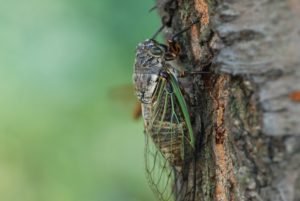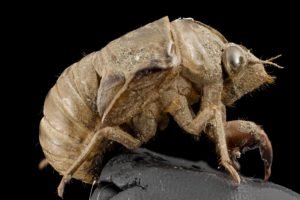
Harde rosh or Cicada is a non-poisonous, winged insect. Though it looks like a Bumbor or wasp, it does not bite. Usually, three to five centimetres long in size, harde rosh has six strong legs, two compound eyes, one small antenna and two pairs of transparent wings-which disperse many colours under the light.
Their arrival acts as a wake-up call to farmers as well as school going students alike. While the former has to get ready for harud or harvest season, the latter has to prepare for their final examinations.
It has made its mark in mythologies, folklore, songs, and literature around the world. It is one of the omnipresent insects of the world. There are more than 3000 species of cicadas found around the world with the majority located in the tropics.
Steadily developing their limbs beneath the earth for years, harde rosh begins to come out of the deep slumbers in the first two weeks of the August, every year, in the valley. Their main job appears to be creating the music that engulfs the surroundings for a couple of months to follow. However, the buzzing sound, which harde rosh creates by vibrating its elastic conical abdomen, is to attract the attention of its female species for matting.

Harde rosh lives for a long life of 13 to17 years but spends most of its lifetime underground in the form of larvae. It remains so four to five feet deep down the earth. Harde rosh lays around two dozen eggs at a time in the tree barks and crevices. Once hatched, for six to ten weeks, the eggs burrow down into the ground for many years and remerge for a short period of two to five months.
“A group
of cicada is called
a Cloud while a
singing group is
called a Chorus.”
During these long periods of underground life, these hatched eggs, Nymphs, feed on sucking the liquids of tree roots. Once above ground, the nymphs shed their hard exoskeletons and begin to buzz while clinging on trees. Those exoskeletons could be found clinging to tree barks.
Feeling the presence of any predators, mostly birds, killer wasps, bats, praying mantis or humans approaching, it stops buzzing. Moreover, it often flies away swiftly while throwing a few drops of liquid towards the predators.
People believe that this liquid is its pee that it throws to distract predators from hunting him down. In actuality, continuous buzzing rises their body temperature which is controlled by extruding liquid through the abdominal pores. Once it flies away, that liquid often falls on its hunters.
Although it is a herbivorous insect, it does not cause any harm to crops or fruits. In countries like China, Malaysia, Burma, Latin America, North America and Central Africa, the nymphs are fried and served as food.

